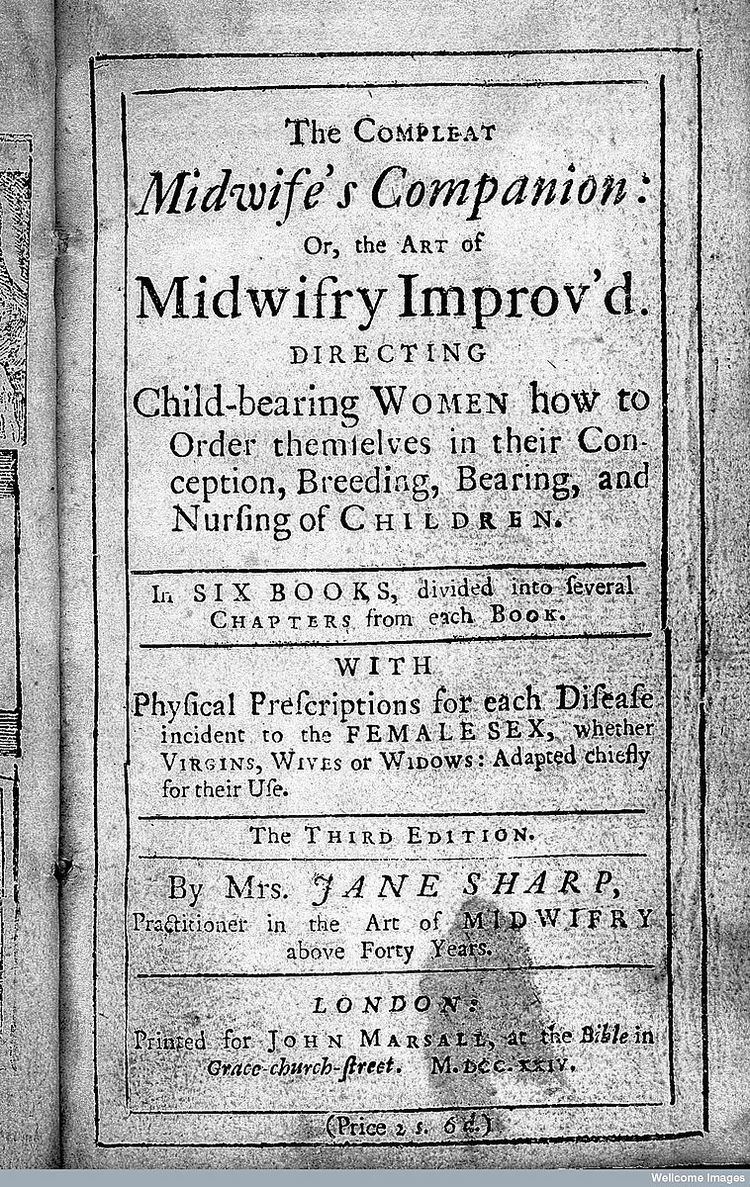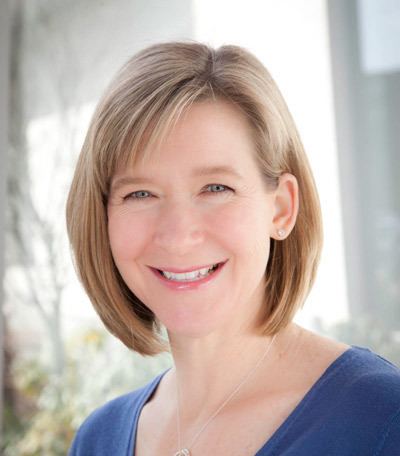Name Jane Sharp | ||
 | ||
Books The midwives book, Primary Computing and ICT, Using ICT in Primary Science T, Primary ICT: Knowled, Country Flowers | ||
Mary jane sharp 1948 home economics graduate first female fulbright scholar
Jane Sharp was a 17th-century English midwife. Her work, published in 1671, The Midwives Book: or the Whole Art of Midwifry Discovered, was the first by an Englishwoman on the subject.
Contents
- Mary jane sharp 1948 home economics graduate first female fulbright scholar
- Life in crete jane sharp
- Life
- Midwifery
- The Midwives Book
- Purpose and use
- Personal beliefs
- Other midwifery manuals
- Impact
- References

Life in crete jane sharp
Life

Little is known of Sharp outside her book. She is thought to have practised in London, although no documentary support for this has been found. Sparse evidence suggests she may have come from Western England. Because she identified herself as neither Catholic nor Protestant in mid-17th century England, historians believe she may have been Puritan, which fits in with her ability to read and write. Her writing reveals her to be a woman who was educated, if not formally, and deeply knowledgeable on her subject matter.
Midwifery
Early in her book, Sharp claims to have practised midwifery for thirty years. As a midwife, she would have access to male and female spheres. In addition to forming personal relationships with mothers between birth and post-childbirth examinations, midwives also had a unique role as a woman present in more public, male-dominated areas like churches and courts for christenings and trials over sexual matters. Though men were beginning to enter the field, the vast majority of births in Sharp's time took place in the mother's home, presided over by a female midwife.
The Midwives Book
Sharp used knowledge passed on from the students of Hippocrates, including Aristotle and Galen, and fellow medieval writers of midwifery manuals. Such knowledge was conveyed through translations of the Hippocratic writers and through the publication of medical treatises such as Nicholas Culpeper's 1662 Directory for Midwives. This harnessed knowledge, coupled with years of experience, led to Sharp's contribution to printed text on midwifery while addressing the gender inequalities of both medical knowledge and experience during the 17th century. The targeted audience of the book is assumed to be the middle class, because it was expensive.
Purpose and use
The Midwives Book was published in 1671 and instructed women how to maintain their births. There were four editions of the book by 1725, giving practical direction to each party involved in the childbirth process, including the mother, the father and the midwife. The book consists of six parts. The first deals with female and male reproductive anatomy. The second covers the process of conception and the growth of the foetus. The third describes the possible difficulties for both conception and birth. In the fourth and fifth chapters, Sharp breaks down childbirth and the immediately ensuing period, advising on what to do and what problems may arise. The sixth and final chapter deals with life after childbirth. While providing in her book a practical guide to midwifery, she uses it also as a platform for her views on women's education, male midwives, and female sexuality.
Sharp includes guidance to mothers on breast-feeding, and nutritional care for infants and children along with a comprehensive list of childhood diseases and their appropriate treatments. Sharp believes and highlights the importance of working with nature not against it. This is demonstrated in her discussion of remedies for young women who have not experienced menstruation: "A Physician is but a helper to nature, and if he observe not nature's rules he will sooner kill than cure." The book also covered birth complications and provided anatomical illustrations for study. It also discussed venereal diseases, syphilis being especially prevalent in the 17th century.
Personal beliefs
In her book, Sharp combines the medical knowledge of the time with personal anecdotes and argued that the profession of midwifery should be reserved for women, at a time when male midwives were becoming more common. She urged female midwives to learn various surgical and pharmacological techniques instead of depending on male physicians when complications and emergencies arose. Although the knowledge gained by men from universities might carry more prestige, it usually lacked the basis of experience of female midwives. Culpeper's admission that he had never attended an actual birth serves a prime example. Sharp stresses that practice and experience used in combination with medical texts produces the best clinician, not theoretical knowledge alone: '"It is not hard words that perform the work, as if none understood the Art that cannot understand Greek. Words are but the shell, that we often break our Teeth with them to come at the kernel."'
In strongly opposing the trend towards male midwives, she expressed a belief that women were naturally inclined toward midwifery. She acknowledged that men had better access to education and so tended to have greater theoretical knowledge of anatomy and medicine, but she decried male midwives' lack of practical understanding. She called for female midwives to end their reliance on male doctors entirely, proposing instead that they learn how to deal with emergencies and complications themselves. Complaining of the inadequacies of female education, she noted that "women cannot attain so rarely to the knowledge of things as many may, who are bred up in universities."
Other midwifery manuals
The Midwives Book drew on contemporary sources, particularly Nicholas Culpepper's A Directory for Midwives (1651) and Daniel Sennert's Practical Physick (1664). However, in doing so, Sharp corrected their misinformation and changed their tone to reflect her own protofeminist views.
The tradition of midwifery manuals in England began with The Byrth of Mankynd, a 1540 translation of Eucharius Rösslin's Der Rosengarten. From then until the publication of The Midwives Book, midwifery manual writing was dominated by men without practical midwifery experience. In lieu of consulting midwives and mothers, they acquired information from ancient Greek translations and other midwifery manuals written by men without experience. These writers exhibited a grotesque fascination with female sexuality. Their writings demonstrate their understanding of women as hypersexual, excessive, weak, and inferior beings, valuable solely in terms of their usefulness to men.
The introduction to the 1999 publication of The Midwives Book states that "For all the parallels between The Midwives Book and its male equivalents, then, the differences in detail result in a fundamental shift in the way sexuality and gender are conceptualized."
Impact
The Midwives Book: or the Whole Art of Midwifry Discovered gave invaluable advice at a time when midwifery faced change. It sold excellently and its popularity indicates that it was most likely a household item in the 18th century. The book is still in print as a primary source of information about women, childbirth and sexuality during the Renaissance.
The children's book The Midwife's Apprentice features a character based on Jane Sharp.
